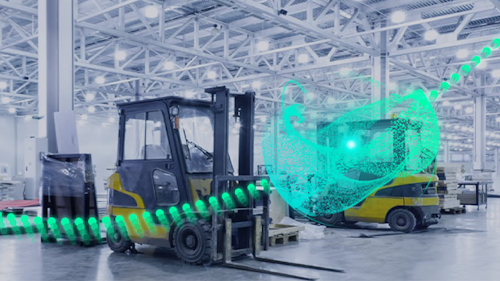During the coming decade, Battery Electrical Vehicles (BEV) will have to become commonplace and start yielding profit for OEMs. To achieve this, battery and vehicle manufacturers will have to further mitigate the current gaps compared to internal combustion engine (ICE) driven cars. These include cost, range, charging speed, reliability and safety. In this white paper, we discuss the implications of powertrain electrification on the vehicle development process, which aspects drive Li-ion battery pack design, which physics are involved, and which types of analysis are required in this context.
Lithium-ion battery design & multi-disciplinary simulation
The battery is so intertwined with the BEV that both the battery and BEV development processes need to happen simultaneously and require continuous collaboration between the various discipline experts. This should be facilitated by deploying a common engineering environment that helps to remove silos between stakeholders. At the same time, such a platform should include the best-in-class solution for all steps in the process. In Simcenter™ software and hardware simulation and testing solutions, everyone involved will find the right tool to address his/her engineering challenges, from initial sizing and architecture definition, electrochemistry analysis and cell, module and pack design, to integration in the vehicle and final validation.
Use of the digital twin for better lithium battery manufacturing
Making a Li-ion battery that performs well, can be rapidly charged and is reliable and safe requires the combined knowledge of many engineering discipline experts. As the battery is connected to all its subsystems, the battery design process cannot be entirely decoupled from the BEV engineering process. We depict the importance of following a simulation-driven approach, complemented by physical testing on a platform that encourages collaboration and diminishes the danger of stakeholders working in silos. The implementation of the digital twin proves to be the most efficient solution to master complexity, stay integrated all along the development cycle and explore all the possibilities for an optimal design.
Intensifying collaboration between OEMs and suppliers for an optimal battery pack design
Whoever is or should be involved, it’s clear the various phases in the battery engineering process, namely cell development, pack sizing and design and vehicle integration, cannot be simply separated from each other. If these are done by different stakeholders, it is important those are connected in a streamlined process that enables communication, teamwork and data exchange. Such an intense collaboration should, for example, facilitate OEMs to effectively communicate design requirements to suppliers who then provide a digital twin that can be used in further development stages. This is in the end also a form of removing silos.
Lithium-ion battery design & multi-disciplinary simulation
The battery is so intertwined with the BEV that both the battery and BEV development processes need to happen simultaneously and require continuous collaboration between the various discipline experts. This should be facilitated by deploying a common engineering environment that helps to remove silos between stakeholders. At the same time, such a platform should include the best-in-class solution for all steps in the process. In Simcenter™ software and hardware simulation and testing solutions, everyone involved will find the right tool to address his/her engineering challenges, from initial sizing and architecture definition, electrochemistry analysis and cell, module and pack design, to integration in the vehicle and final validation.
Use of the digital twin for better lithium battery manufacturing
Making a Li-ion battery that performs well, can be rapidly charged and is reliable and safe requires the combined knowledge of many engineering discipline experts. As the battery is connected to all its subsystems, the battery design process cannot be entirely decoupled from the BEV engineering process. We depict the importance of following a simulation-driven approach, complemented by physical testing on a platform that encourages collaboration and diminishes the danger of stakeholders working in silos. The implementation of the digital twin proves to be the most efficient solution to master complexity, stay integrated all along the development cycle and explore all the possibilities for an optimal design.
Intensifying collaboration between OEMs and suppliers for an optimal battery pack design
Whoever is or should be involved, it’s clear the various phases in the battery engineering process, namely cell development, pack sizing and design and vehicle integration, cannot be simply separated from each other. If these are done by different stakeholders, it is important those are connected in a streamlined process that enables communication, teamwork and data exchange. Such an intense collaboration should, for example, facilitate OEMs to effectively communicate design requirements to suppliers who then provide a digital twin that can be used in further development stages. This is in the end also a form of removing silos.



